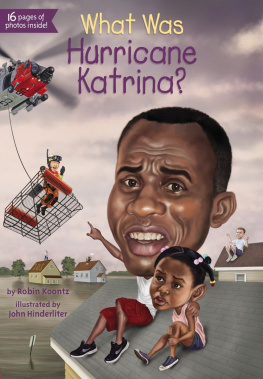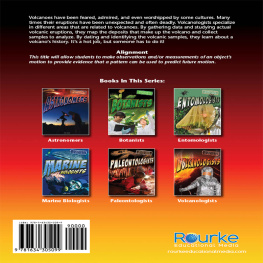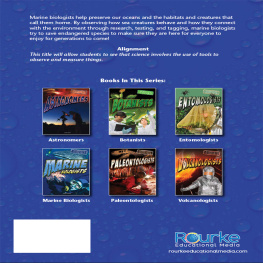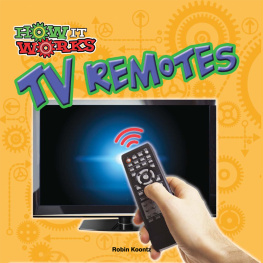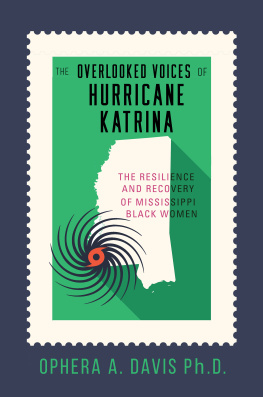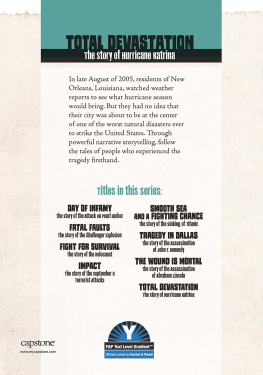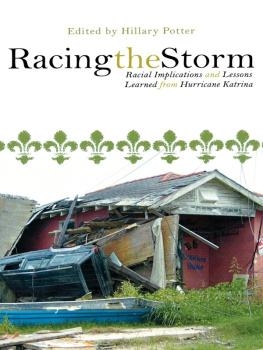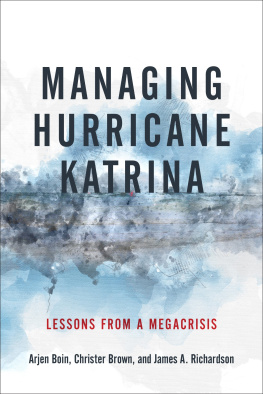Robin Koontz - What Was Hurricane Katrina?
Here you can read online Robin Koontz - What Was Hurricane Katrina? full text of the book (entire story) in english for free. Download pdf and epub, get meaning, cover and reviews about this ebook. year: 2015, publisher: Penguin, genre: History. Description of the work, (preface) as well as reviews are available. Best literature library LitArk.com created for fans of good reading and offers a wide selection of genres:
Romance novel
Science fiction
Adventure
Detective
Science
History
Home and family
Prose
Art
Politics
Computer
Non-fiction
Religion
Business
Children
Humor
Choose a favorite category and find really read worthwhile books. Enjoy immersion in the world of imagination, feel the emotions of the characters or learn something new for yourself, make an fascinating discovery.
- Book:What Was Hurricane Katrina?
- Author:
- Publisher:Penguin
- Genre:
- Year:2015
- Rating:4 / 5
- Favourites:Add to favourites
- Your mark:
- 80
- 1
- 2
- 3
- 4
- 5
What Was Hurricane Katrina?: summary, description and annotation
We offer to read an annotation, description, summary or preface (depends on what the author of the book "What Was Hurricane Katrina?" wrote himself). If you haven't found the necessary information about the book — write in the comments, we will try to find it.
What Was Hurricane Katrina? — read online for free the complete book (whole text) full work
Below is the text of the book, divided by pages. System saving the place of the last page read, allows you to conveniently read the book "What Was Hurricane Katrina?" online for free, without having to search again every time where you left off. Put a bookmark, and you can go to the page where you finished reading at any time.
Font size:
Interval:
Bookmark:


To my Alabama kin, and the memory of our precious times at the shoreRK
For Rose, who hates scary stuffJH
GROSSET & DUNLAP
Penguin Young Readers Group
An Imprint of Penguin Random House LLC

Penguin supports copyright. Copyright fuels creativity, encourages diverse voices, promotes free speech, and creates a vibrant culture. Thank you for buying an authorized edition of this book and for complying with copyright laws by not reproducing, scanning, or distributing any part of it in any form without permission. You are supporting writers and allowing Penguin to continue to publish books for every reader.
The publisher does not have any control over and does not assume any responsibility for author or third-party websites or their content.
Text copyright 2015 by Robin Koontz. Illustrations copyright 2015 by Penguin Random House LLC. All rights reserved. Published by Grosset & Dunlap, an imprint of Penguin Random House LLC, 345 Hudson Street, New York, New York 10014. GROSSET & DUNLAP is a trademark of Penguin Random House LLC.
Library of Congress Cataloging-in-Publication Data is available.
ISBN 978-0-698-41240-8
Version_1
What Was Hurricane Katrina?
Monday, August 29, 2005
It was very early Monday morning in New Orleans, Louisiana. Rain had been pounding all night. The wind was blowing harder and harder. The day before, the mayor of the city had sent a warning to all the people in New Orleans. Everyone had to get out. A monster storm was on its way!
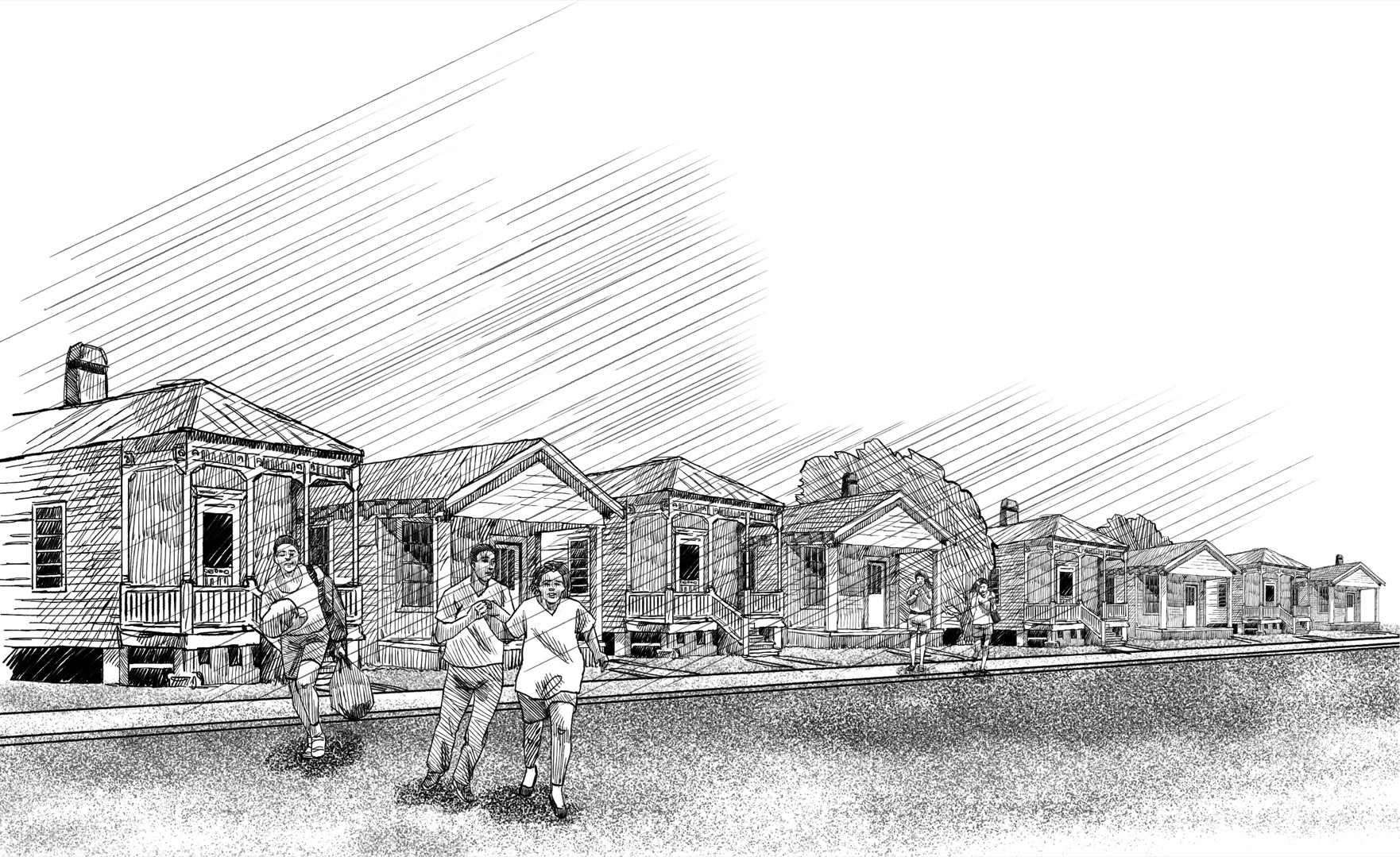
All weekend, cars had crowded the streets. Gas stations had lines of people waiting to fill up. Highways became jammed with one-way traffic going north, out of New Orleans. Those who stayed behind crouched in their attics, if they had one. Others waited in shelters, hotels, and hospitals. Many thousands were crowded together, either in a huge stadium or the city convention center. Almost everyone had known for several days that a bad storm was on its way. But no one realized how bad. Katrina was more than a savage hurricane. It was a superstorm. By late Monday afternoon, most of New Orleans was flooded, and the water still kept rising.
Water poured into homes and rose higher as people cut their way to the rooftops. Entire neighborhoods were flooded and destroyed. Tens of thousands were stranded, many without food or water. Roads and bridges were gone. There was no power. Telephone lines failed. Most cell phones stopped working. People couldnt turn on a TV or a radio to find out what was going on.
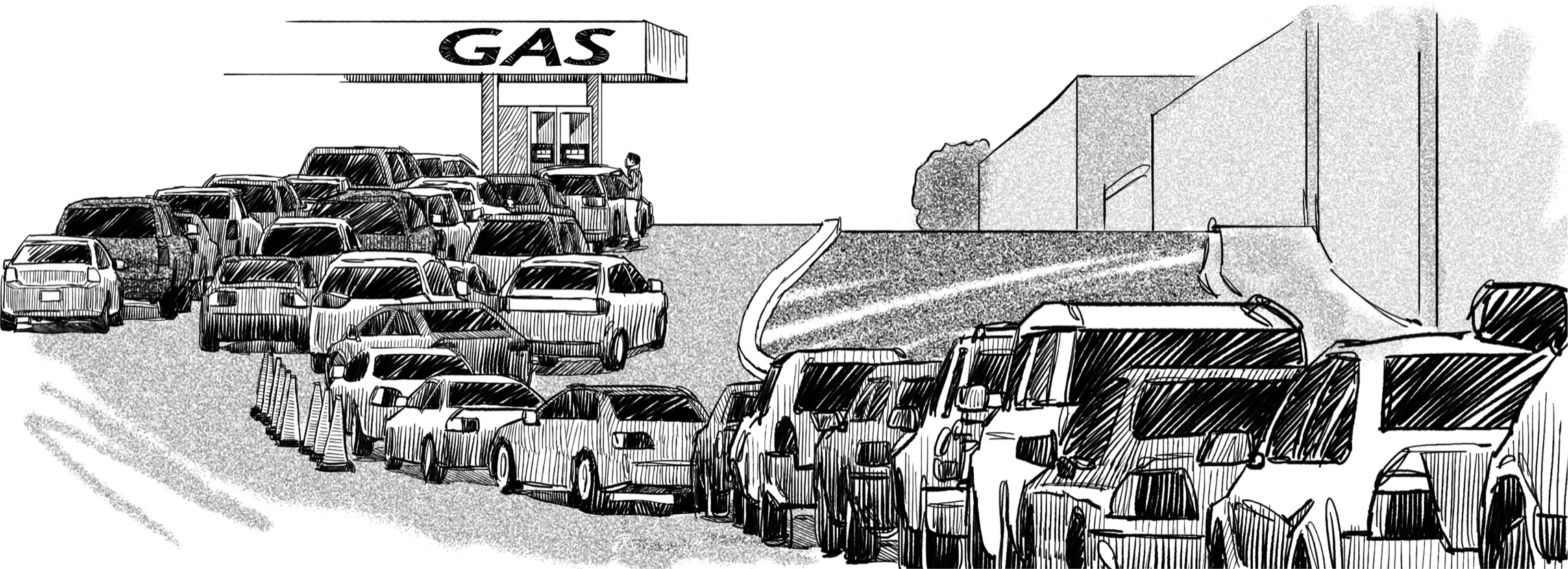
People waited for help on rooftops and in trees, and sometimes help never came. Others were trapped inside their houses. People drowned in the streets of their own neighborhoods. Over a million people became homeless, and over eight hundred thousand homes were destroyed. Hurricane Katrina turned out to be the most destructive storm in the history of the United States. It was also one of the most deadlythe best guess is that 1,900 people lost their lives because of the storm. Sadly, many of those lives could have been saved.
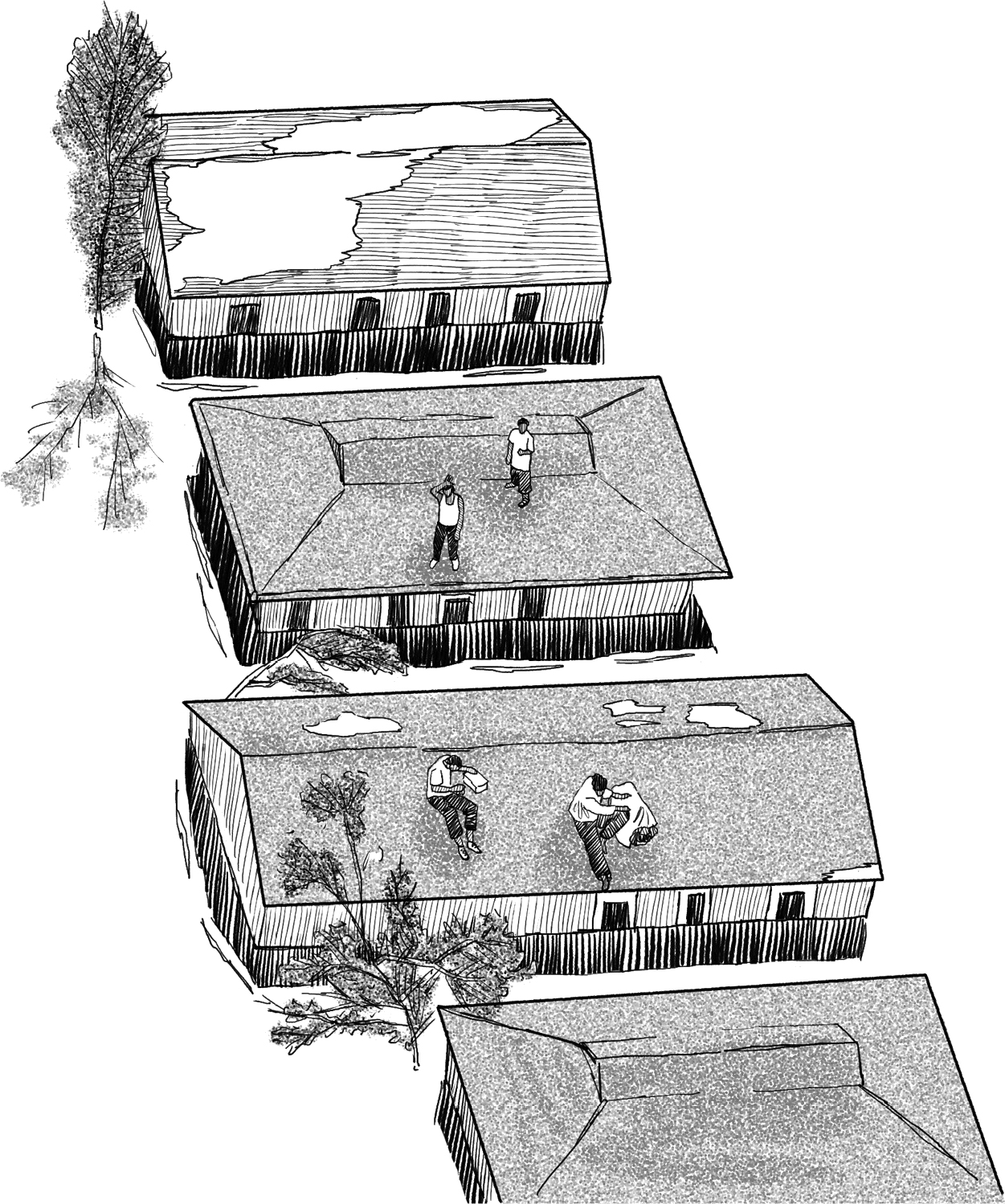
Early-Warning System
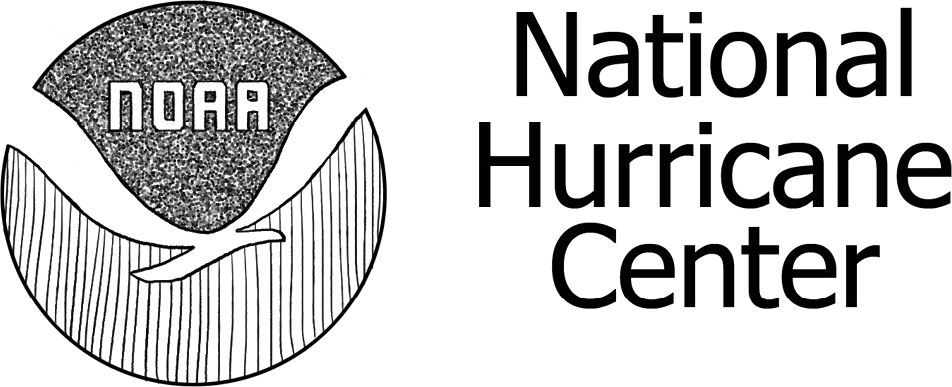
Storms like Katrina can be tracked and measured by satellite, radar, aircraft, and other means. The National Hurricane Center studies the behavior and paths of every storm it spots. Its main job is to provide an early-warning system. Then the public can prepare for what might be coming its way. Meteorologists, scientists who study weather, use a scale to measure hurricanes. The scale is based mostly on the storms wind speed. There are five categories of hurricanes. Category 1 is the weakest. Category 5 is the most powerful, with winds at more than 155 miles per hour. Katrina was a Category 5.
CHAPTER 1
Just a Little Storm
Hurricane Katrina began on August 19 as a tropical disturbance. That means it was just a little storm with winds blowing in every direction.

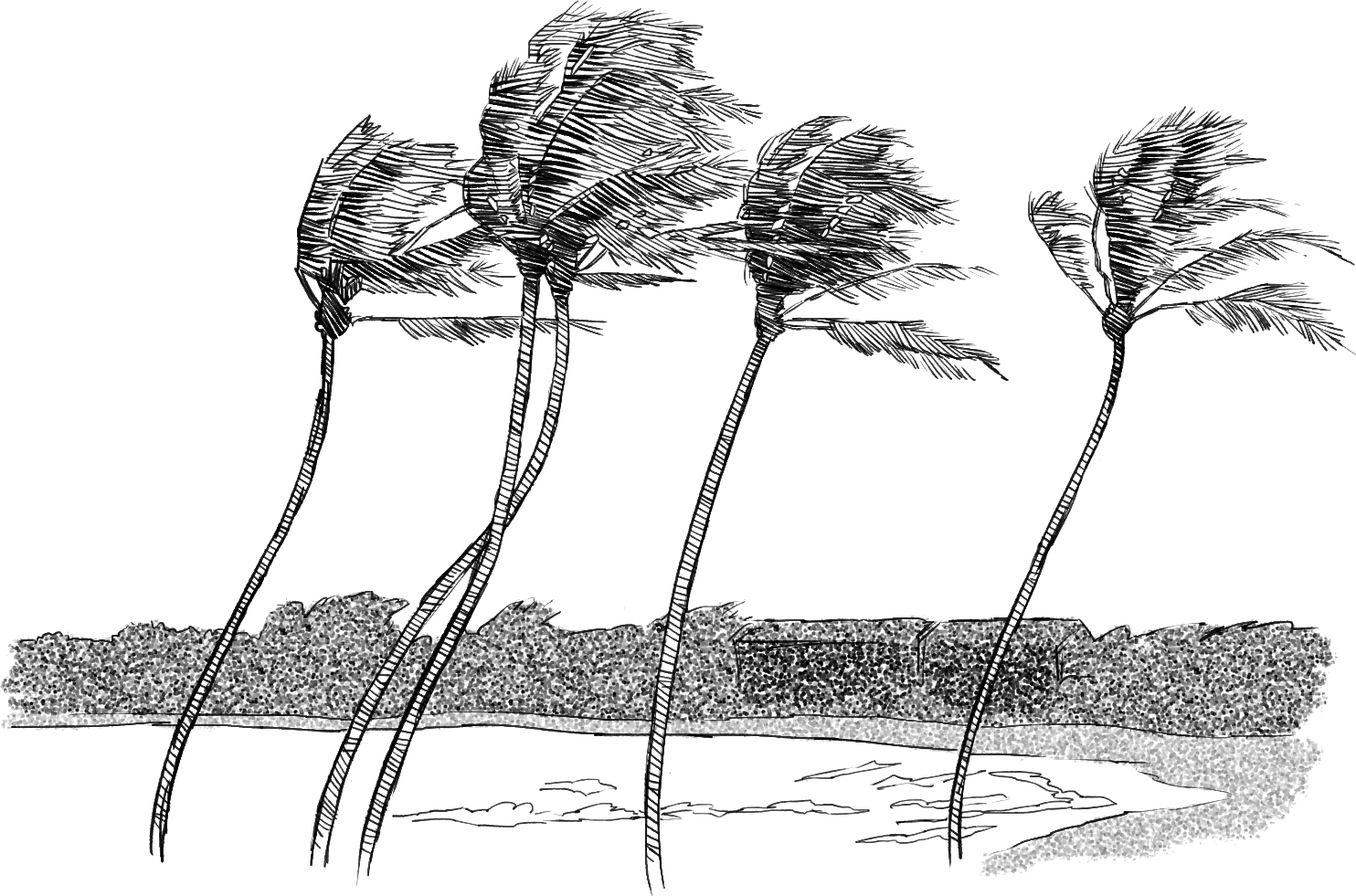
Meteorologists watched the little storm move across the Atlantic Ocean from the west coast of Africa, north of the equator. They knew that hurricanes form in warm, moist air. Ocean water north of the equator during late summer is perfect for hurricanes.
By the time the little storm got close to the Bahamas late on August 22, 2005, it was stronger. Winds whipped at about twenty-five miles per hour, making small trees sway.
About two days later, the storm moved northwest through the Bahamas with winds of about forty miles per hour. A wind that strong is hard to walk in. Trees can lose small branches. The storm also rotated in a circle. It was at this point that the tropical storm was named Katrina. And it was heading toward South Florida.
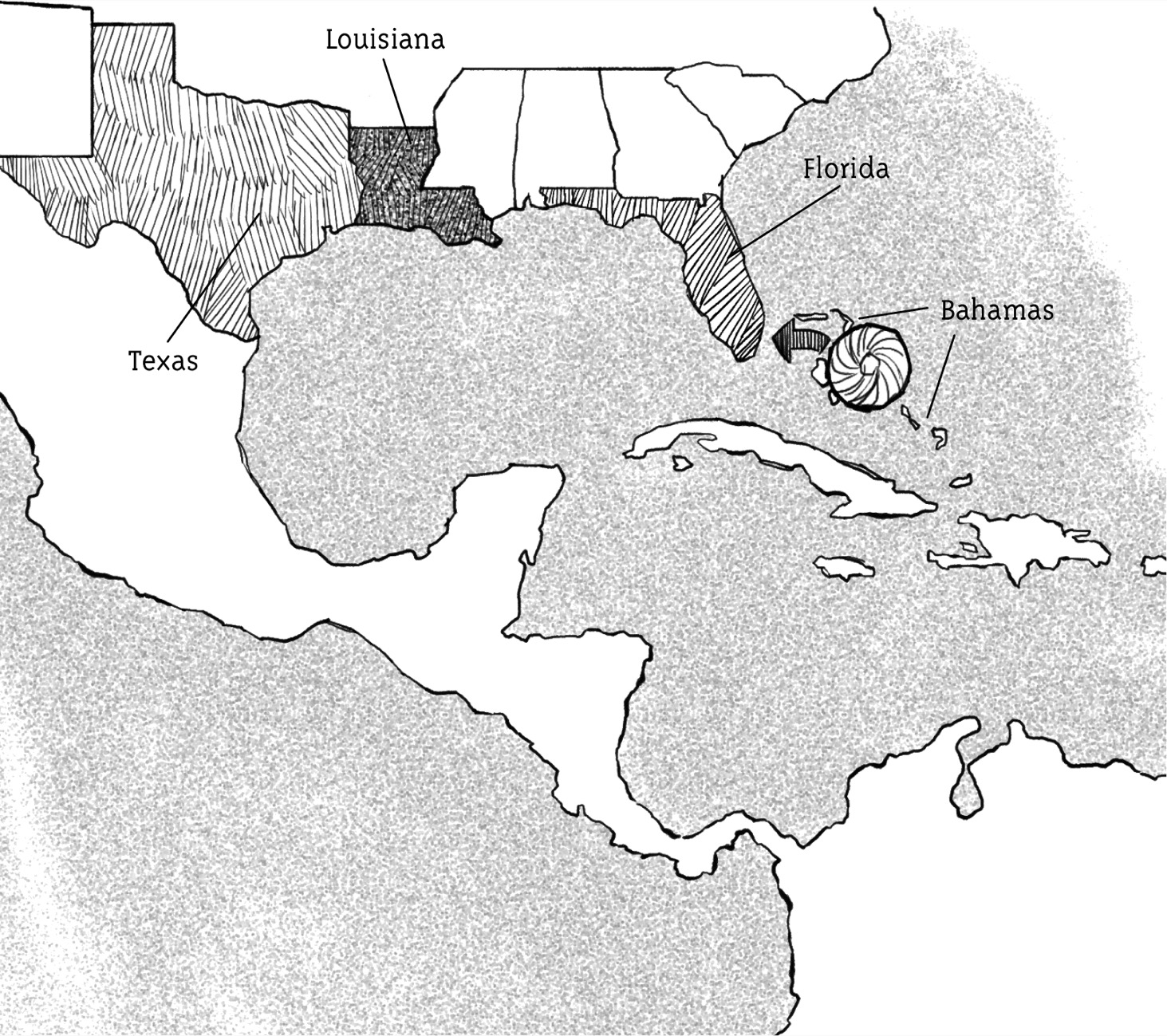
Hurricane Names
Hurricanes have been given names since 1953. It is an easy way to report their progress. Before hurricanes had names, it got confusing when more than one storm was being tracked. Six lists of 21 different names are used. The names are in alphabetical order and switch between male and female names. If all the names on a list are used up in one season, the next storms are named for letters in the Greek alphabet. Names of the most severe storms, like Katrina, are retired.
Retired Hurricane Names as of 2014

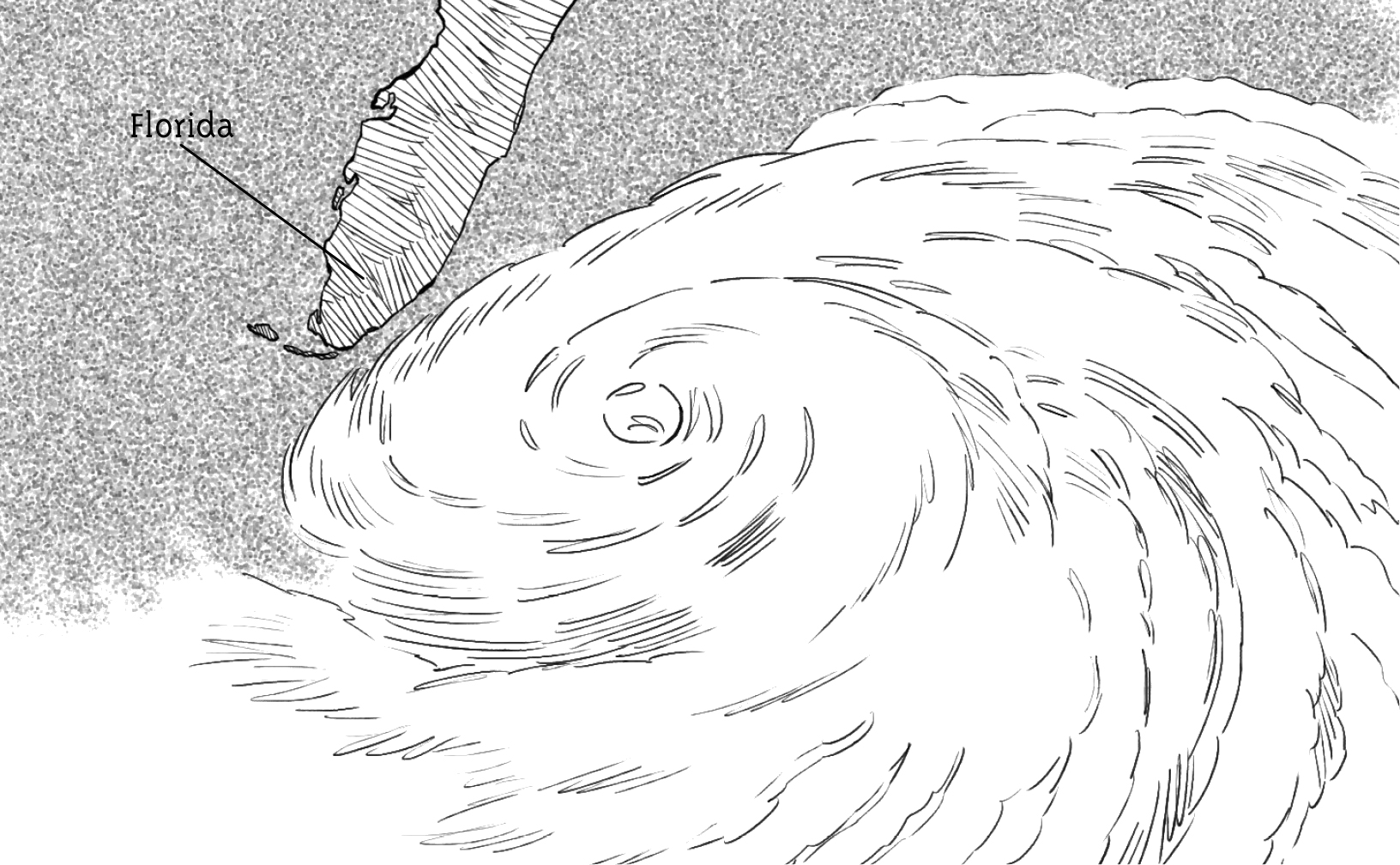
By August 25, Katrina was close to becoming a hurricane. Hurricanes have powerful winds of at least seventy-four miles per hour. (They are called cyclones in some areas of the world and typhoons in others.) Their fierce winds rotate around a center core called the eye . Winds that strong can uproot trees, toss cars around, and blow the roofs off houses!
Hurricanes form in the North Atlantic Ocean in late spring, summer, and early fall. They occur most often between mid-August and October. These unwelcome visitors can blow into land areas in the Caribbean Sea, the Gulf of Mexico, and the North Atlantic.
Most storms weaken when they reach land. Thats because they no longer are getting power from warm ocean air. Katrina, however, got stronger as it blew its way to southern Florida on August 25. The powerful storm turned into a hurricane about two hours before it landed, causing flooding and several deaths. Even so, at that point, Katrina was still not considered an unusual storm.
Font size:
Interval:
Bookmark:
Similar books «What Was Hurricane Katrina?»
Look at similar books to What Was Hurricane Katrina?. We have selected literature similar in name and meaning in the hope of providing readers with more options to find new, interesting, not yet read works.
Discussion, reviews of the book What Was Hurricane Katrina? and just readers' own opinions. Leave your comments, write what you think about the work, its meaning or the main characters. Specify what exactly you liked and what you didn't like, and why you think so.

